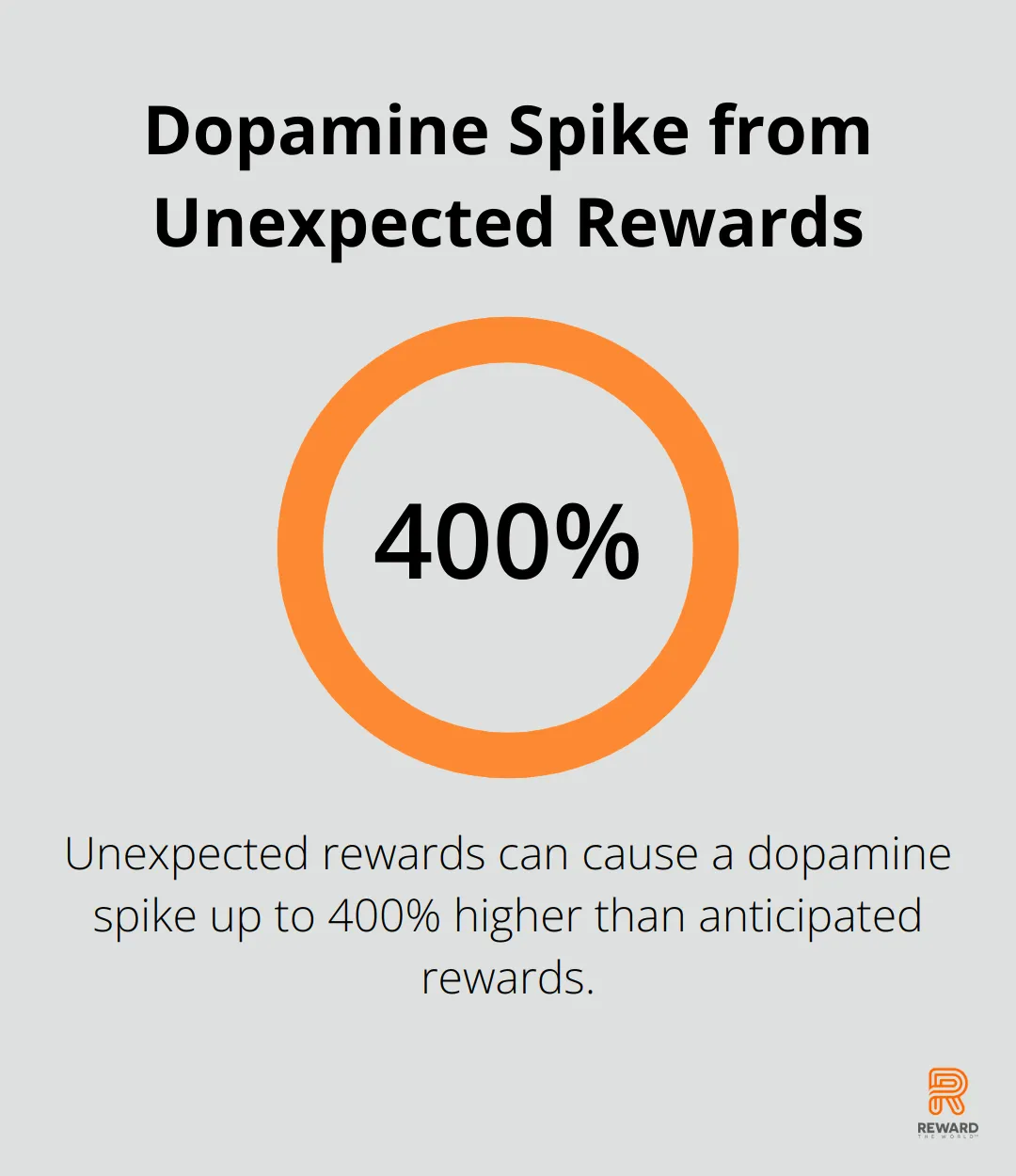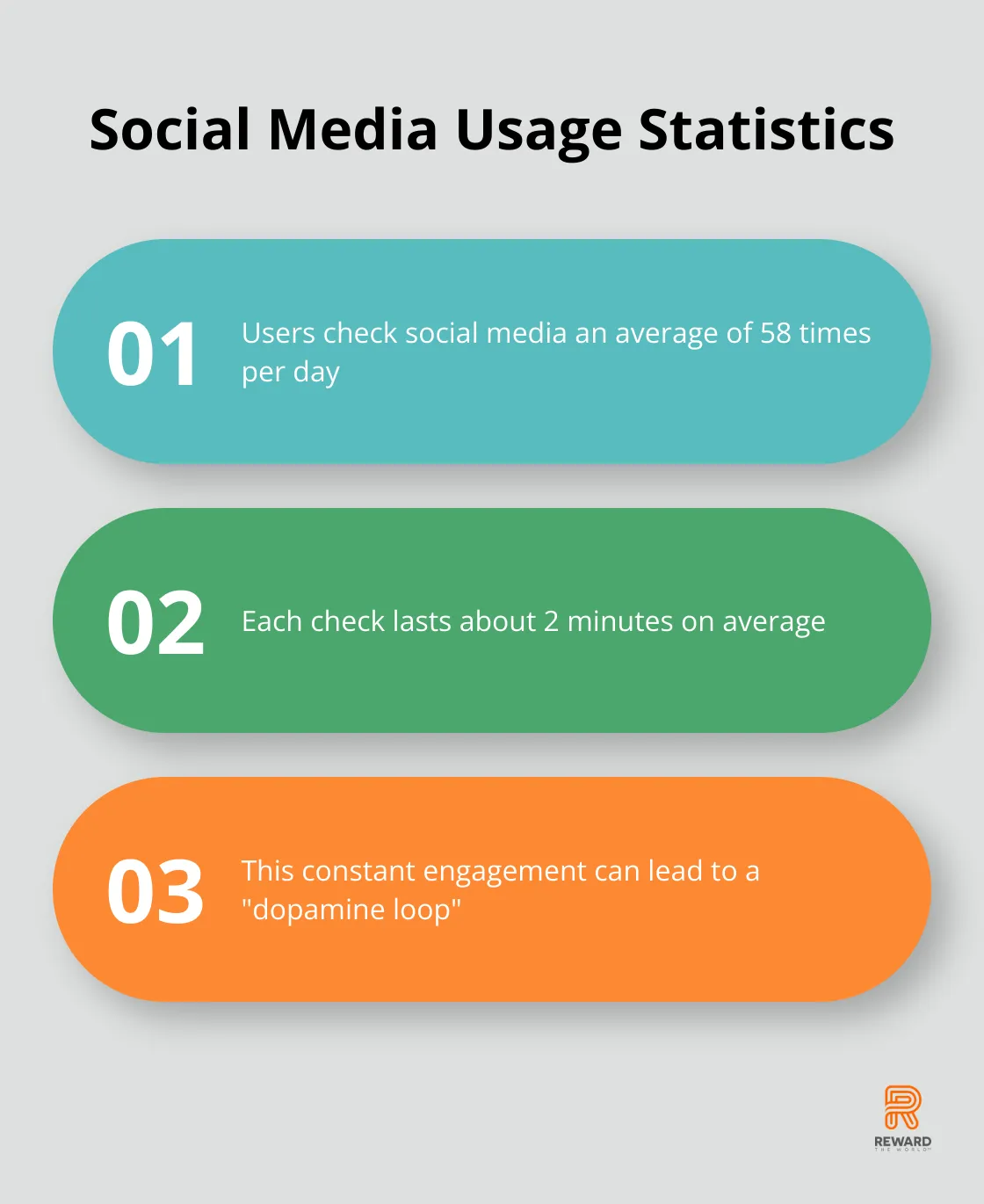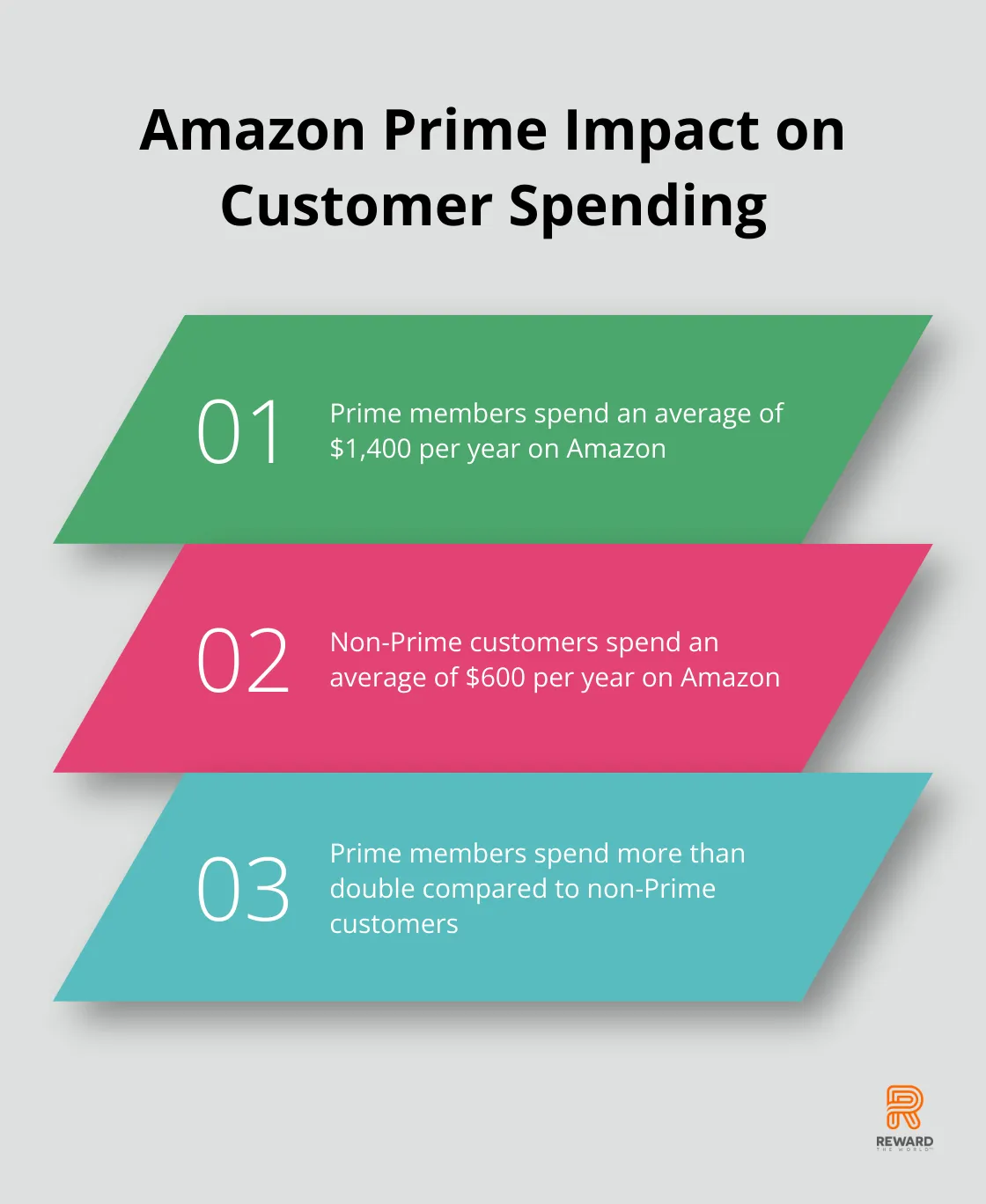
Quick rewards have become a cornerstone of modern life, shaping our behaviors and expectations. From social media likes to instant food delivery, we’re surrounded by opportunities for instant gratification.
At Reward the World, we’ve seen firsthand how this psychological phenomenon impacts customer engagement and loyalty. This blog post explores the science behind quick rewards and their powerful influence on our decision-making processes.
The Dopamine Effect: Understanding the Brain’s Reward System
The Power of Dopamine in Behavior
The brain’s reward system significantly influences our behavior and decision-making. Dopamine, a key neurotransmitter, plays a central role in our experience of pleasure and motivation. When we encounter a rewarding stimulus, our brain releases dopamine, creating a feeling of satisfaction and reinforcing the behavior that led to the reward.
Quick Rewards: A Dopamine Surge
Quick rewards prove particularly effective at triggering dopamine release. Research indicates that unexpected rewards can cause a dopamine spike up to 400% higher than anticipated rewards. This explains our strong attraction to instant gratification – it provides an immediate dopamine boost that feels good and creates a desire for more.

Dopamine’s Impact on Consumer Behavior
Dopamine profoundly affects our behavior. It not only creates positive feelings in the moment but also generates a strong motivation to repeat the rewarding action. This makes quick rewards highly effective in shaping consumer behavior.
Recent research has contributed to a better understanding of the impact of retailing loyalty programmes on repeat purchase behaviour. This demonstrates the power of dopamine-driven behavior in building customer loyalty.
The Two Sides of Instant Gratification
While the dopamine rush from quick rewards can benefit businesses looking to engage customers, it’s important to consider potential downsides. Constant exposure to instant gratification can decrease patience and create difficulty in pursuing long-term goals.
A 2019 study published in Psychological Science found that individuals who frequently sought instant rewards showed reduced activity in the prefrontal cortex (the area of the brain responsible for self-control and decision-making).
Striking a Balance: Quick Rewards and Long-Term Value
To harness the power of dopamine without falling into the trap of constant instant gratification, businesses need to strike a balance. Combining quick rewards with longer-term incentives can create a more sustainable engagement strategy.
For example, a loyalty program might offer small, instant rewards for each purchase while also allowing points to accumulate for larger rewards. This approach satisfies the immediate desire for gratification while also encouraging long-term engagement.
Understanding the dopamine effect and its impact on behavior proves essential for businesses aiming to create effective reward strategies. By tapping into the brain’s reward system, companies can drive customer engagement and loyalty while remaining mindful of the potential pitfalls of over-reliance on instant gratification.
As we move forward, we’ll explore how the digital age has amplified our desire for instant gratification and the consequences this has on our daily lives and decision-making processes.
How Does the Digital Age Fuel Instant Gratification?
The Rise of On-Demand Services
The digital revolution has transformed consumer expectations for speed and convenience. On-demand services have dramatically altered consumer behavior. From ride-sharing apps to food delivery platforms, these services cater to our desire for immediate satisfaction. The rise of same-day delivery, instant downloads, and on-demand services has fueled an expectation of immediate results.
This expectation for immediacy extends beyond just product delivery. Consumers now demand instant customer service, immediate responses to inquiries, and real-time updates on their orders. Businesses that fail to meet these expectations risk losing customers to more agile competitors.
Social Media and Mobile Apps: The Dopamine Trap
Social media platforms and mobile apps have mastered the art of exploiting our brain’s reward system. Features like likes, shares, and notifications trigger small dopamine releases, creating a cycle of engagement that can be hard to break.
A 2021 study published in the Journal of Behavioral Addictions found that social media users check their phones an average of 58 times per day (with each check lasting about two minutes). This constant engagement can lead to what psychologists call a “dopamine loop,” where users become increasingly dependent on these small, frequent rewards.

For businesses, this presents both opportunities and challenges. While these platforms offer powerful tools for customer engagement, they also set a high bar for capturing and maintaining user attention. Companies must find ways to provide quick, meaningful interactions without falling into manipulative practices.
The Double-Edged Sword of Instant Gratification
The ability to satisfy desires quickly can be beneficial, but constant exposure to instant gratification can have negative consequences. Decreased activity in the prefrontal cortex is often associated with procrastination and instant gratification. The brain’s reward system often fuels procrastination, as engaging in a more enjoyable, immediate activity releases dopamine.
This shift can lead to decreased patience and difficulty in pursuing long-term goals. For businesses, this means striking a balance between the need for quick engagement and strategies that encourage sustained loyalty and long-term value creation.
Balancing Immediate and Long-Term Rewards
One effective approach combines immediate rewards with longer-term incentives. For example, a loyalty program might offer small, instant rewards for each purchase while also allowing points to accumulate for larger rewards. This satisfies the immediate desire for gratification while also encouraging long-term engagement.
The digital age has undoubtedly amplified our desire for instant gratification. While this presents challenges, it also offers opportunities for businesses that can effectively navigate this new landscape. Understanding the psychological drivers behind these behaviors allows companies to create strategies that satisfy immediate desires while fostering long-term customer relationships.
As we explore how businesses can leverage quick rewards effectively, we’ll examine successful strategies in customer loyalty programs and discuss the importance of balancing immediate gratification with long-term value creation.
How Businesses Leverage Quick Rewards
The Power of Immediate Gratification in Loyalty Programs
Many successful loyalty programs embrace the concept of immediate rewards. Starbucks Rewards offers instant free drinks or food items after a certain number of purchases, which drives repeat visits and increases customer satisfaction. A 2023 Forrester Research study reveals that companies investing in improving their CX quality experience higher customer loyalty, retention, and devotion.
Amazon Prime provides another example with its instant access to free shipping and streaming content. This immediate value proposition leads to impressive customer retention rates. Prime members spend an average of $1,400 per year on Amazon, compared to $600 for non-Prime customers.

Balancing Short-Term and Long-Term Rewards
The most effective loyalty programs strike a balance between immediate gratification and long-term value. The North Face’s XPLR Pass program exemplifies this approach. Members earn points on purchases that they can redeem immediately for small rewards or save for larger experiences like adventure trips. This strategy satisfies the desire for instant rewards while encouraging ongoing engagement.
Technology Enables Instant Rewards
Advanced technology platforms play a key role in delivering instant rewards effectively. Modern platforms offer businesses the ability to provide instant eGift cards, cash payments, and points across millions of rewards. This immediacy taps directly into the psychology of instant gratification, enhances customer satisfaction, and drives repeat engagement.
Personalization Enhances Quick Rewards
Personalization significantly boosts the impact of quick rewards. An Epsilon study showed that 80% of consumers are more likely to do business with a company when it offers them personalized experiences. Businesses can use data analytics to tailor rewards to individual preferences, which increases their perceived value and effectiveness.
Measuring Quick Reward Impact
To maximize the effectiveness of quick reward strategies, businesses must continuously measure and optimize their programs. Key metrics to track include redemption rates, customer lifetime value, and the impact on sales conversions. Regular A/B testing of different reward types and timings helps refine strategies for maximum impact.
Final Thoughts
Quick rewards tap into powerful psychological mechanisms that shape our behavior and decision-making. The dopamine rush triggered by instant gratification creates a strong motivation to repeat rewarding actions. This makes it a potent tool for businesses that seek to engage customers and build loyalty.
The digital age amplifies our desire for immediate satisfaction, which presents both opportunities and challenges. Companies that effectively leverage quick rewards can significantly boost customer engagement and loyalty. Individuals need to be aware of how instant gratification affects their decision-making and long-term goal pursuit.
Reward the World offers powerful tools for implementing effective reward strategies. It enables businesses to tap into the psychology of instant gratification while fostering long-term customer relationships. Those who master the balance between quick rewards and long-term incentives will thrive in an increasingly competitive marketplace.
